December 2023
By Kelsey Davenport
The head of the International Atomic Energy Agency (IAEA) warned that strikes against nuclear power plants must be avoided after an explosion damaged a nuclear power plant in Ukraine. Two days after the Ukrainian facility was targeted, Moscow alleged that Kyiv attempted a drone strike on a nuclear facility in Russia.
 The Khmelnitsky Nuclear Power Plant is located in northeastern Ukraine and includes two reactors, one of which is shut down for maintenance. There was no direct strike on the nuclear power facility, but ancillary buildings at the site suffered damage from the shockwaves after Ukraine shot down two drones in the vicinity of the power plant.
The Khmelnitsky Nuclear Power Plant is located in northeastern Ukraine and includes two reactors, one of which is shut down for maintenance. There was no direct strike on the nuclear power facility, but ancillary buildings at the site suffered damage from the shockwaves after Ukraine shot down two drones in the vicinity of the power plant.
IAEA Director-General Rafael Mariano Grossi said in a press release on Oct. 25 that the explosion shattered windows and temporarily cut power to external radiation monitors but did not affect nuclear safety and security at the facility.
Grossi said the incident underscores “the extremely precarious nuclear safety situation in Ukraine, which will continue as long as this tragic war goes on.” He warned that “hitting a nuclear power plant must be avoided at all costs.”
Ukrainian President Volodymyr Zelenskyy said that the attack on the Khmelnitsky plant shows Russia’s willingness to “target nuclear power stations and other critical facilities” and demonstrates that the “pressure on the terrorist state is insufficient.”
Zelenskyy also said that his country will “not only defend ourselves, but also respond” to attacks on critical infrastructure.
An IAEA press release on Oct. 27 noted that Russia reported drone activity in the vicinity of the Kursk Nuclear Power Plant in western Russia near the Ukrainian border. The Russian Defense Ministry said in a statement that it thwarted a Ukrainian attempt to carry out a “terrorist attack” against the nuclear facility that same day.
According to the ministry, none of the three drones caused any damage to the facility, but one exploded near a building used to store spent nuclear fuel.
Russia also said it shot down nine Ukrainian drones near the Zaporizhzhia Nuclear Power Plant on Nov. 2.
Ukrainian nuclear energy company Energoatom continues to operate the Zaporizhzhia complex, but the site has been occupied by Russian forces since Moscow attacked it in violation of international law during the early days of its full-scale invasion of Ukraine. (See ACT, April 2022.)
In October, Grossi said that Zelenskyy “personally assured” him that Ukraine will not directly bomb or shell the Zaporizhzhia plant but that “other options are on the table” as Ukraine tries to retake the facility.
Maria Zakharova, spokesperson for the Russian Foreign Ministry, accused Ukraine of attempting to disrupt the IAEA’s rotation of staff stationed at Zaporizhzhia and of “carrying out criminal and irresponsible provocations.”
Despite the drone attack, the IAEA confirmed in a Nov. 3 statement that a new team of agency experts was able to rotate into the Zaporizhzhia complex.
Grossi said that the IAEA presence at the site is “vital for efforts to keep this major nuclear facility safe and protect people and the environment in Ukraine and beyond.”
Two of the six units are in hot shutdown to generate steam to heat the nearby city of Enerhodar, where many Zaporizhzhia plant personnel live, and to run the power plant. The other four units are in cold shutdown.
According to the IAEA statement, Russia is still blocking agency access to three of the reactor rooftops. Earlier this year, Zelenskyy accused Russia of planting explosives on the rooftops of the reactors. (See ACT, September 2023.)
An IAEA expert mission was able to access the roof of one of the reactors in October and could observe parts of the rooftops of two other reactors. Grossi said in an Oct. 11 statement that agency experts did not see any mines or explosives, but he emphasized the importance of visiting all six rooftops “one after the other.”
Grossi said the agency will continue to request access to assess adherence to the five principles for ensuring the safety and security of the Zaporizhzhia complex that he presented to the UN Security Council in May. The principles include refraining from using the power plant to store heavy weapons or station military personnel and refraining from attacks “of any kind from or against the plant.” (See ACT, July/August 2023.)
The IAEA also said its experts “need access to all six turbine halls together” and have only been granted partial access to three of the turbine halls.
Grossi said the agency will continue to maintain an expert presence at the Zaporizhzhia site “as long as it is necessary.”





 States are permitted to reject IAEA inspectors, but IAEA Director-General Rafael Mariano Grossi told the board that Iran’s actions are “unprecedented and contrary to the cooperation that is required” to effectively implement a comprehensive safeguards agreement.
States are permitted to reject IAEA inspectors, but IAEA Director-General Rafael Mariano Grossi told the board that Iran’s actions are “unprecedented and contrary to the cooperation that is required” to effectively implement a comprehensive safeguards agreement. The Wall Street Journal first reported on Nov. 1 that Washington sent Moscow a proposal in September. A senior Biden administration official told the newspaper that the United States awaits a response but hopes to initiate “a conversation on what a framework after New START could look like,” referring to the 2010 New Strategic Arms Reduction Treaty expiring in 2026.
The Wall Street Journal first reported on Nov. 1 that Washington sent Moscow a proposal in September. A senior Biden administration official told the newspaper that the United States awaits a response but hopes to initiate “a conversation on what a framework after New START could look like,” referring to the 2010 New Strategic Arms Reduction Treaty expiring in 2026. The North Atlantic Council, the alliance’s principal political decision-making body, announced the decision Nov. 7, stating that the allies “will suspend the operation of their obligations to the treaty” effective Dec. 7.
The North Atlantic Council, the alliance’s principal political decision-making body, announced the decision Nov. 7, stating that the allies “will suspend the operation of their obligations to the treaty” effective Dec. 7.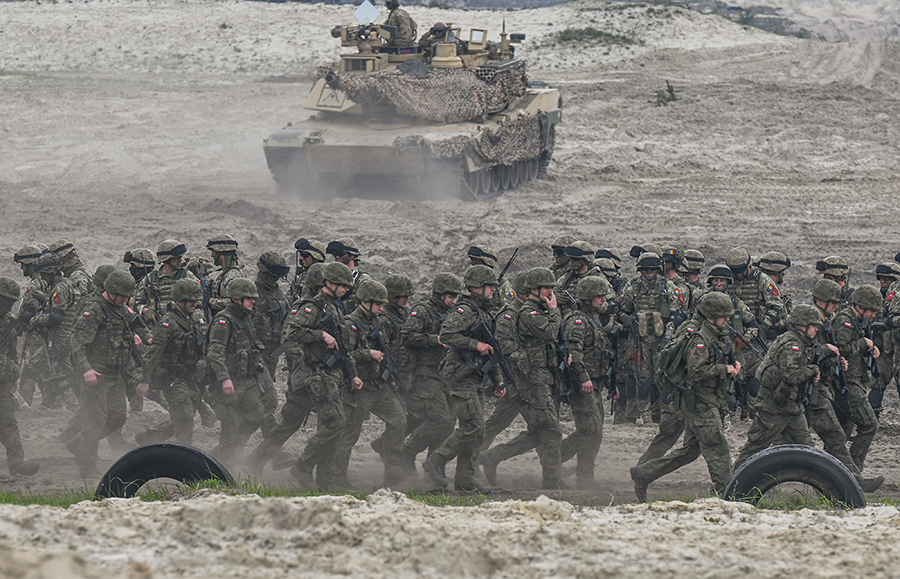 Russia’s full-scale invasion of Ukraine in 2022, its withdrawal from the CFE Treaty, and now the decision by NATO states to suspend participation in the accord puts the conventional arms control system in Europe, which was painstakingly built over decades, into near total collapse.
Russia’s full-scale invasion of Ukraine in 2022, its withdrawal from the CFE Treaty, and now the decision by NATO states to suspend participation in the accord puts the conventional arms control system in Europe, which was painstakingly built over decades, into near total collapse. Senior Pentagon officials are keen to exploit recent progress in AI in order to gain a combat advantage over China and Russia, considered the most capable potential U.S. adversaries.
Senior Pentagon officials are keen to exploit recent progress in AI in order to gain a combat advantage over China and Russia, considered the most capable potential U.S. adversaries. The order followed the public release of ChatGPT and other generative AI programs that are able to create text, images, and computer code comparable to that produced by humans. On occasion, these programs have suffused those materials with false and fabricated content, provoking widespread unease about their safety and reliability.
The order followed the public release of ChatGPT and other generative AI programs that are able to create text, images, and computer code comparable to that produced by humans. On occasion, these programs have suffused those materials with false and fabricated content, provoking widespread unease about their safety and reliability. Produced by Israel Aerospace Industries in collaboration with the U.S. Missile Defense Agency, the surface-to-surface Arrow missile defense system, considered the top tier of Israel’s multilayered air defenses, is focused on incoming ballistic missiles and consists of the Arrow-2 and the Arrow-3 variants.
Produced by Israel Aerospace Industries in collaboration with the U.S. Missile Defense Agency, the surface-to-surface Arrow missile defense system, considered the top tier of Israel’s multilayered air defenses, is focused on incoming ballistic missiles and consists of the Arrow-2 and the Arrow-3 variants.